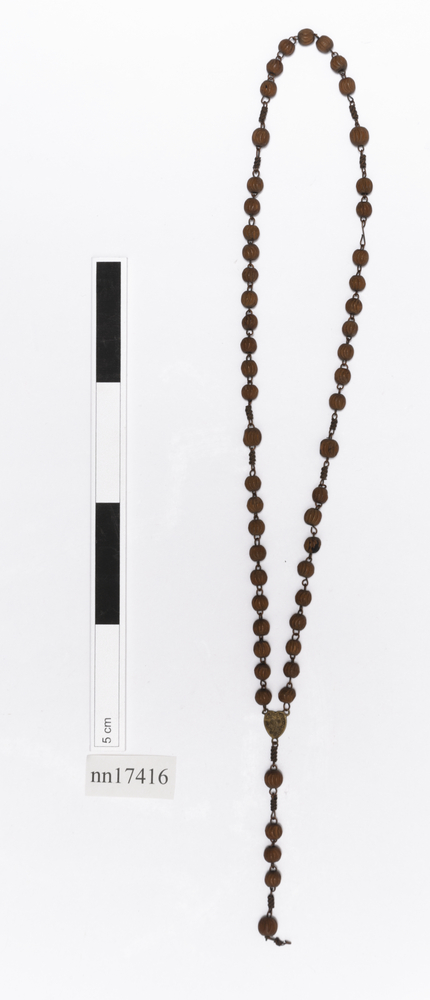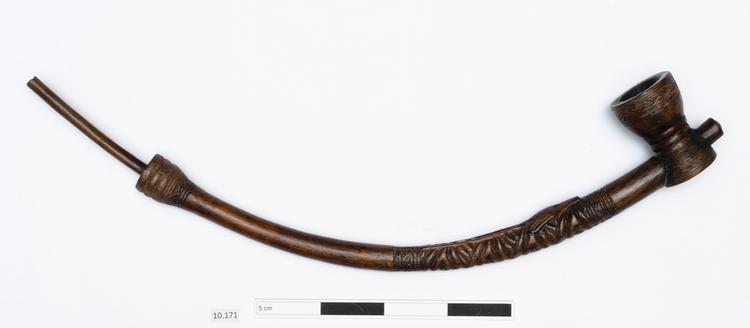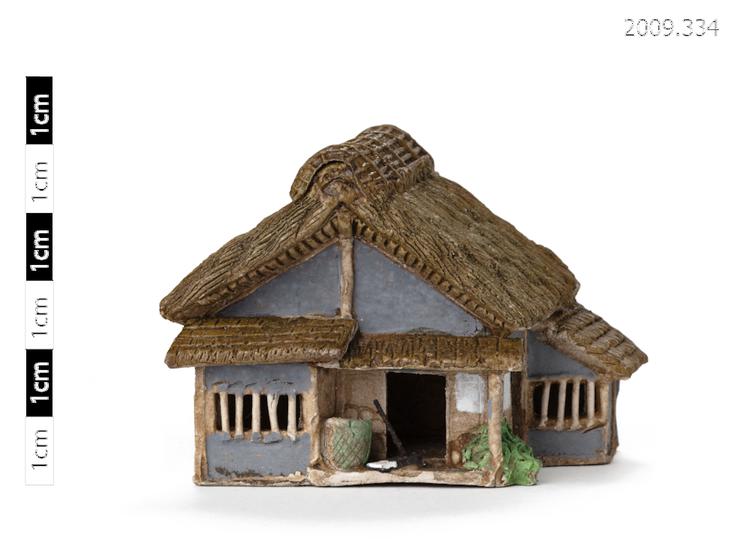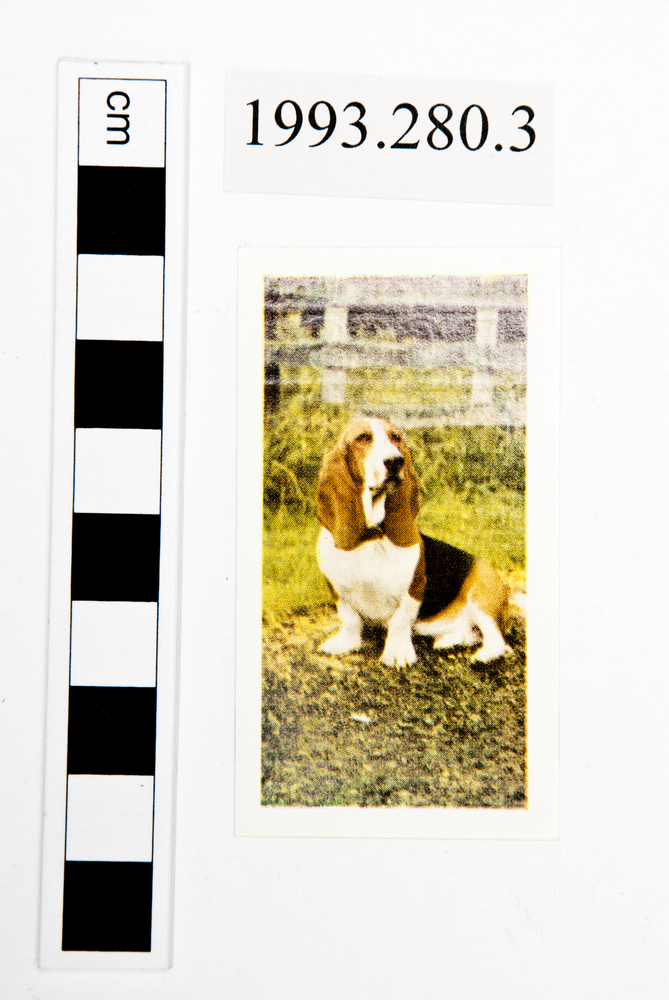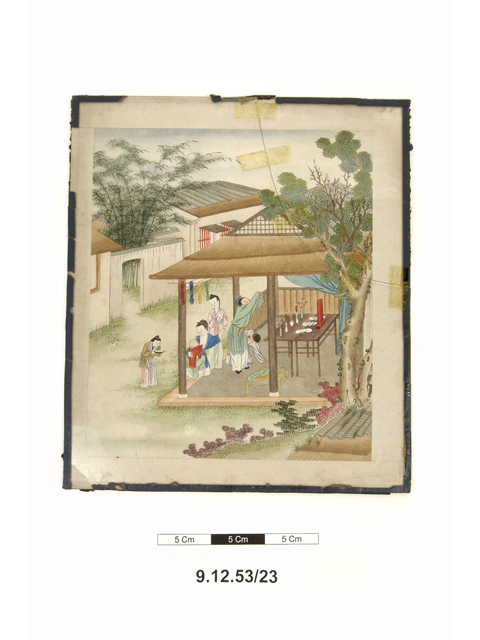
Painting in ink and water colour on paper. It depicts a scene within a compound with a pavilion with a tiled and thatched roof. Six figures are offering three piles of silk thread in front of a wooden tablet on an altar. To the front of the altar is a censer flanked by two candles and two vases of flowers. The wooden tablet possibly bears the name of their ancestor. Among the six figures, a kneeling woman is breast-feeding a child. Two men are kowtowing in front of the altar, while the standing woman puts her hands together in a gesture of worship. Another woman standing outside the pavilion holds a tray with three wine cups.
This is one of fifteen scenes, on white paper in polychrome and with a glass mount, depicting various stages in the culture of silk worms and the production of silk and silk textiles. The number 131/15 on the back of the painting is probably the lot number. The artist of the painting is unknown, and it was probably painted for sale to foreigners. The painting was copied after Jiao Bingzhen's rendition of 'Gengzhitu' ('Illustrations of Tilling and Weaving'), who was a court artist, active in the years 1680 to 1720.
A set of paintings depicting silk manufacture was a popular souvenir bought by European or American sea captains and merchants in the 19th century, as the images explained the making of silk exported to the West.



